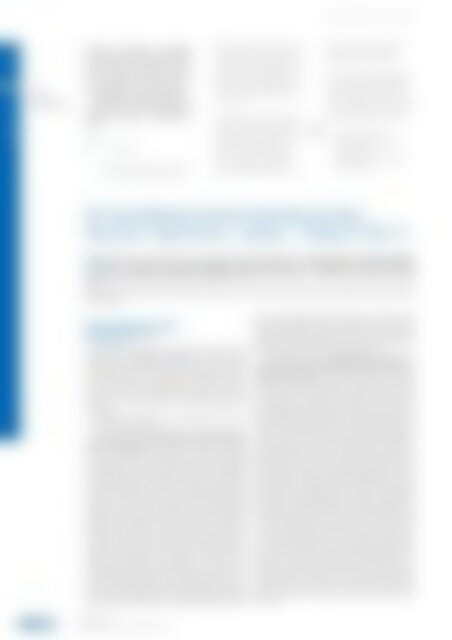atw 2015-01
Create successful ePaper yourself
Turn your PDF publications into a flip-book with our unique Google optimized e-Paper software.
<strong>atw</strong> Vol. 60 (<strong>2<strong>01</strong>5</strong>) | Issue 1 ı January<br />
34<br />
AMNT 2<strong>01</strong>4<br />
Paper<br />
presented<br />
at the RRFM 2<strong>01</strong>4<br />
facturing, construction, assembling<br />
and management. These phases will be<br />
carried out by national and international<br />
companies, and for these activities,<br />
a provision was made in the national<br />
budget, but not yet confirmed.<br />
Total project remaining time span is<br />
estimated in 5 years after contract signature<br />
and subject to availability of<br />
funds.<br />
11. References<br />
| | [1] I. J. A. Perrotta, J. Obadia, “The RMB<br />
project development status”, on Proceedings<br />
of the 2<strong>01</strong>1 International Conference<br />
on Research Reactors: Safe Management<br />
and Effective Utilization, held in<br />
Rabat, Morocco, 14-18 November 2<strong>01</strong>1;<br />
International Atomic Energy Agency, Vienna,<br />
Austria (2<strong>01</strong>2), available at: http://<br />
www-pub.iaea.org/MTCD/Publications/<br />
PDF/P1575_CD_web/datasets/abstracts/<br />
C6Perrotta.html.<br />
| | [2] I. J. Obadia, J. A. Perrotta, “A sustainability<br />
analysis of the Brazilian Multipurpose<br />
Reactor Project”, on Transaction of<br />
14 th International Topical Meeting on Research<br />
Reactor Fuel Management<br />
(RRFM-2<strong>01</strong>0), held in Marrakesh, Morocco,<br />
21-25 March 2<strong>01</strong>0; European<br />
Nuclear Society, Brussels, Belgium<br />
(2<strong>01</strong>0), ISBN 978-92-95064-10-2, available<br />
at: http://www.euronuclear.org/<br />
meetings/rrfm2<strong>01</strong>0/transactions/<br />
RRFM2<strong>01</strong>0-transactions-s6.pdf.<br />
| | [3] International Atomic Energy Agency,<br />
“Specific Considerations and Milestones<br />
for a Research Reactor Project”, Nuclear<br />
Energy Series NP-T-5.1, IAEA, Vienna,<br />
(2<strong>01</strong>2), ISBN: 978–92–0–127610–0, Available<br />
at: - http://www-pub.iaea.org/MTCD/<br />
publications/PDF/Pub1549_web.pdf.<br />
Authors<br />
José Augusto Perrotta and<br />
Adalberto Jose Soares<br />
Comissão Nacional de Energia<br />
Nuclear (CNEN)<br />
Avenida Prof. Lineu Prestes 2242<br />
05508-000, Brazil<br />
45 th Annual Meeting on Nuclear Technology: Key Topic |<br />
Reactor Operation, Safety – Report Part 3<br />
The following reports summarise the presentations of the Technical Sessions “Reactor Operation, Safety: Radiation<br />
Protection”, “Competence, Innovation, Regulation: Fusion Technology” and “Competence, Innovation, Regulation:<br />
Education, Expert Knowledge, Knowledge Transfer” presented at the 45 th AMNT 2<strong>01</strong>4, Frankfurt, 6 to 8 May<br />
2<strong>01</strong>4.<br />
The other Key Topics and Technical Sessions have been covered in previous issues of <strong>atw</strong> and will be covered in further<br />
issues of <strong>atw</strong>.<br />
Reactor Operation, Safety:<br />
Radiation Protection<br />
Angelika Bohnstedt<br />
Due to different circumstances the amount of presentations in the<br />
technical session “Radiation Protection” was at the Annual<br />
Meeting actually reduced to three lectures. But this gave the audience<br />
with about 23 to 27 participants the opportunity to have a<br />
lively discussion after each presentation, not only with the lecturer<br />
but also with other colleagues in the public. So the whole<br />
session was a fruitful exchange of interesting information and<br />
knowledge.<br />
The session was chaired by Dr. Angelika Bohnstedt, Karlsruhe<br />
Institute of Technology (KIT).<br />
The first presentation “Optimisation of Clearance Measurements<br />
According to DIN 25457 Taking Account of Type A and<br />
Type B Uncertainties” was hold by S. Thierfeld (co-author:<br />
S. Wörlen; both Brenk Systemplanung GmbH). In the beginning<br />
S. Thierfeld gave an overview of the DIN 25457, the widely applied<br />
standard for clearance measurements. He showed the evolvement<br />
from the fundamentals in 1993 via the Part 4 about contaminated<br />
and activated metal scrap, to the Part 6 of building rubbles and the<br />
latest Part 7 of the DIN about nuclear sites. And he emphasized<br />
that the primary aim is to get a reliable yes/no decision about the<br />
compliance with clearance levels. At the next step S. Thierfeld explained<br />
the incorporation of DIN ISO 11929, the standard for<br />
dealing with uncertainties in measurements, into DIN 25457. The<br />
consideration of Type A and Type B uncertainties for measurements<br />
and their calibrations was discussed. For different factors,<br />
influencing measurement and calibration, a conservative approach,<br />
taking only Type A uncertainties into account, and a realistic<br />
approach, combining Type A and Type B uncertainties, is possible.<br />
S. Thierfeld elucidated how to check step by step in the measurement<br />
and the calibration procedure which approach of uncertainty<br />
determination will be more reasonable for each respective<br />
factor. He concluded that finally a combination of all conservative<br />
and realistic approaches has to be done in a way to reach clearance<br />
measurements as precisely as necessary. At the end S. Thierfeld<br />
pointed out that the higher effort to reduce uncertainties will<br />
bring a decreased effort for decontamination work.<br />
The following presentation “Optimization of Handling Components<br />
and Large Scale Shielding Calculations with the Deterministic<br />
Code ATTILA” was given by S. Boehlke (co-author:<br />
M. Mielisch; both STEAG Energy Services GmbH), who started with<br />
the statement that in general shielding components are designed<br />
with conservative assumptions and boundary conditions which<br />
cover all possibly occurring situations. This can result in an overestimated<br />
shielding and the goal of an optimization procedure is to<br />
decrease on one hand the radiation level in accessible areas but on<br />
the other hand to decrease the amount of avoidable shielding material.<br />
S. Boehlke noted that for this optimization the calculation of<br />
the shielding geometry as well as the calculation of the dose rate<br />
distribution was done with the code ATTILA. He explained the different<br />
features of ATTILA, e.g. intuitive graphical user interface<br />
and the possibility to integrate simplified CAD geometries etc., and<br />
demonstrated in the following the use of ATTILA with 2 examples:<br />
a large scale dose rate mapping and the optimization of the shielding<br />
material of a handling machine for canisters of vitrified glass.<br />
For the large scale model (situation in a storage building) several<br />
aspects like superposition of all sources, the scattering of walls<br />
etc. and the scattering through openings was taken into account.<br />
As result S. Boehlke showed an overview about the shielding situation<br />
in the whole building. The second example was the calculation<br />
of the dose rate at the surface of a handling machine for canisters.<br />
Here S. Boehlke could demonstrate as consequence of the<br />
calculations a change in the design of the machine with the success<br />
that regions where the dose rate limit was exceeded before<br />
vanished and on the material site the reduction of used lead was<br />
about 30 % and the overall mass reduction of the machine was of<br />
about 10 %.<br />
AMNT 2<strong>01</strong>4<br />
Key Topic | Reactor Operation, Safety – Report Part 3

















